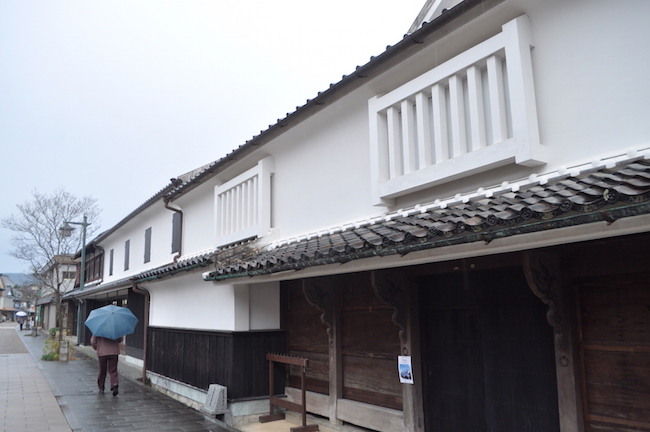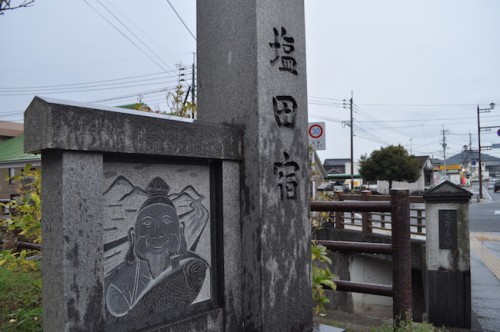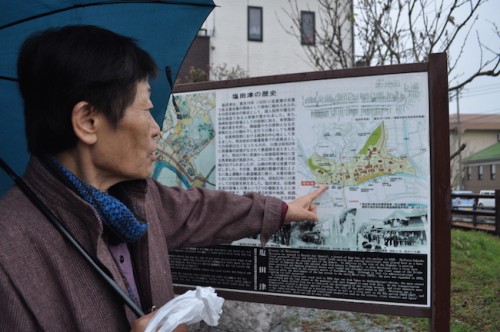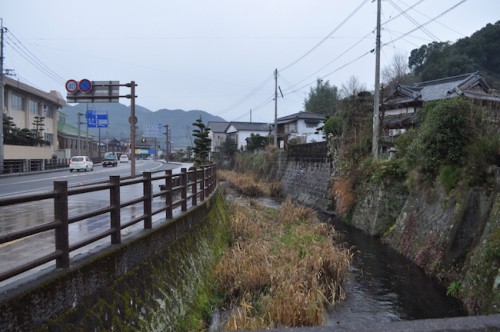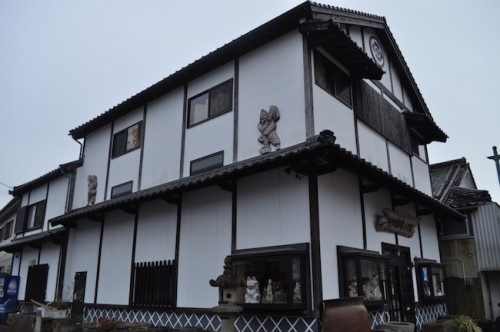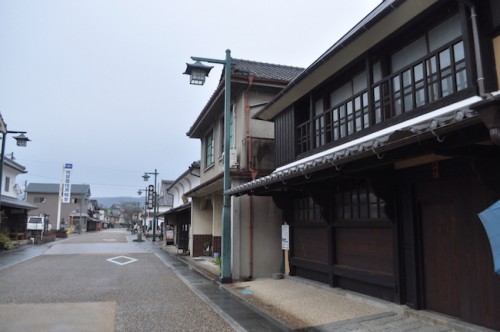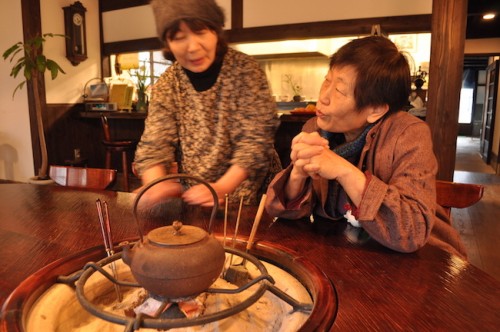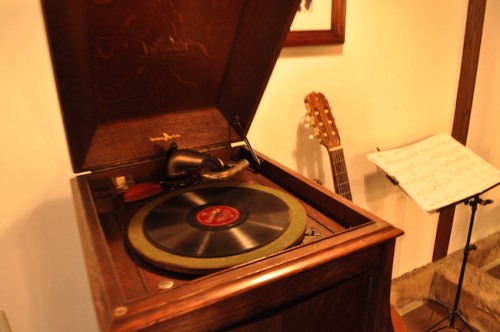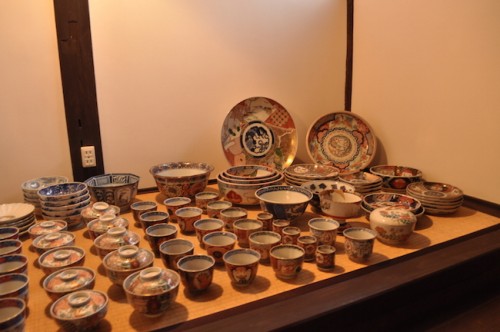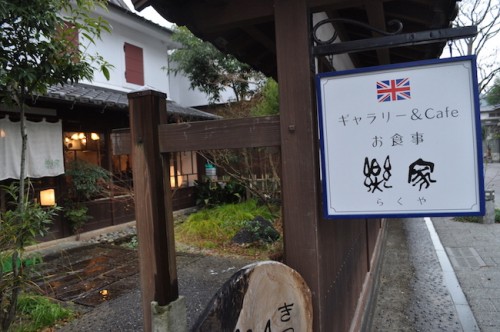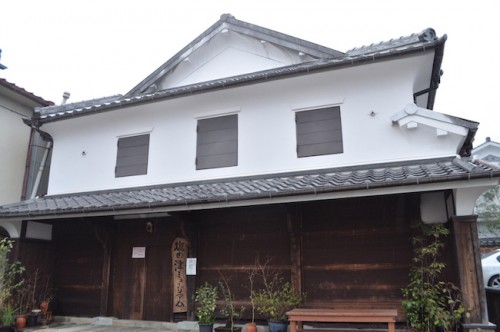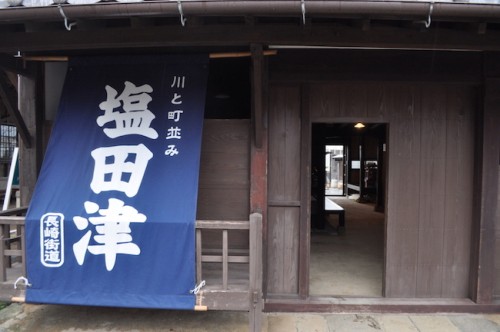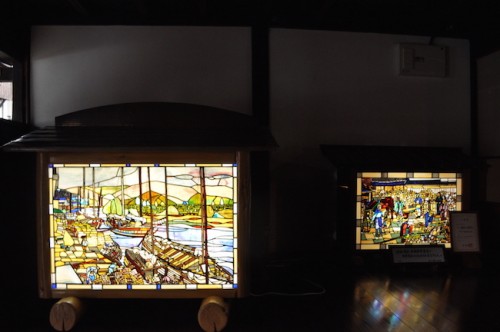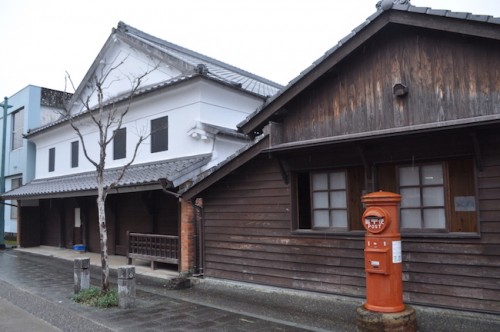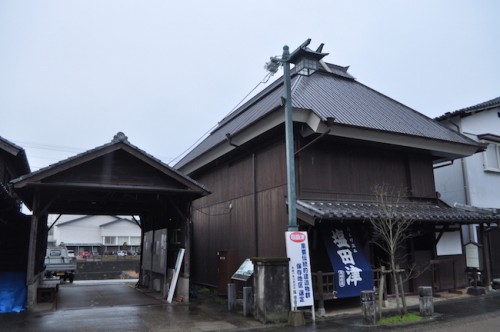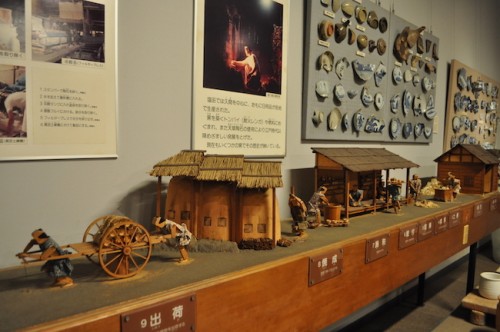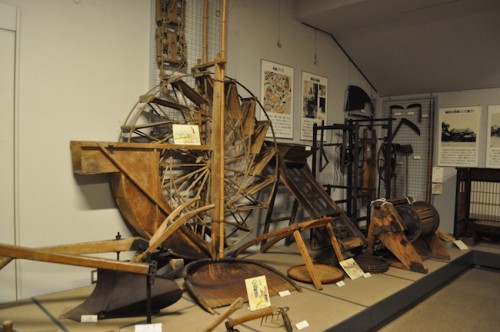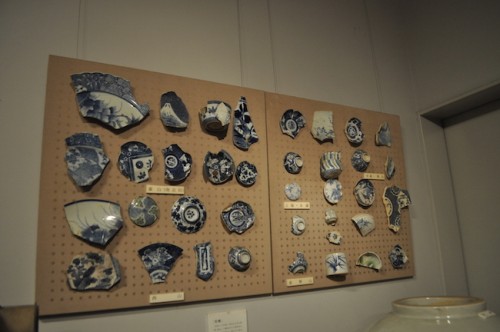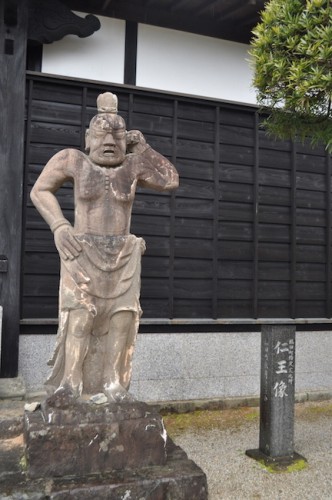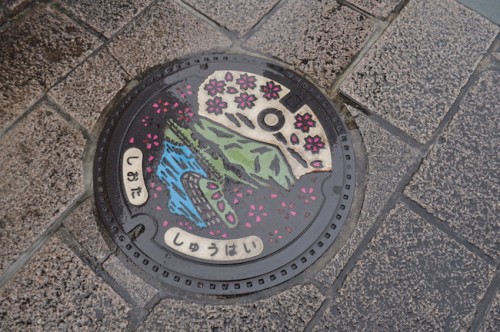Sponsored by Saga Prefectural Tourism Federation
I arrived in the town of Shiota on a local bus; a quiet and gloomy Saturday bus ride past fields of green tea leaves on one side, and a mountain on the other. It started to drizzle right as I got off the bus and I realized I had forgotten my umbrella back at the inn. I braved the rain which began to pound down, and asked a local man for directions to the town hall. It was closed when I got there (should have figured that one out, a Saturday over a national holiday weekend…) so I walked in the direction of the tiny creek, hoping that it would lead me in the direction I need.
While I waited at the crosswalk, I was wandering and wondering where the famous street is with the old historic buildings. The old lady next to me at the crosswalk turned over and shot a smile, and asked what I was doing in Shiota with my big bulky camera. I told her I was here to take some photos, and asked if she knew where the famous street was. Without pointing a finger to the right direction, she instead guided me with her body, walking one step in front of me as the light turned green and gesturing me with her open hand to follow her.
Before I even knew it, I was in for a treat. The local woman spent the next two hours walking around with me and telling me all about the town’s rich history.
What is Shiota famous for?
Before I tell you more about my time in Shiota, let me tell you briefly about the draw to this small town in Saga prefecture. Shiota is a must visit stop for history buffs and art lovers. Though it’s not yet a well-known spot for visitors, its significance and importance dates back centuries. Shiota is a town that runs along the Nagasaki Kaido, a river route that stretched 228 kilometers from Kokura to Nagasaki in the Kyushu region. Since the early 1700s, this was a vital route for Dutch and Japanese traders because the route lead out to Nagasaki, the first port in Japan that was open to the outside world. Shiota-shuku in Shiota town was one of the 25 post stations along this route. This port was used to export goods, such as the local ceramicware. Though trading through this route via small boats have long bid farewell, the small river is still seen running through the town, and the area around the river is still preserved in its olden ways.
Enjoy local pottery, architecture and a cup of tea in Shiota
Parts of the history I learned about Shiota came from this lovely stranger I met along the way. I learned her name, Ms. Kisayo. By the time we crossed the historic bridge, it began to pour down even harder, and she lead me inside an old, but warm building. It was a café called Rakuya and the lady inside greeted us with a smile and swiftly began boiling water in a traditional Japanese teapot in the middle of the table. Ms. K gave the lady a bag of oranges picked from her own yard and the two chatted about their days and caught up on local gossip.
The structure of this building is as old as the trading route and the town’s history. The strong European influence at the time of the newly opened trades is evident in the architecture of this café. The café’s lady told me about the original owners of the once-lived-in home, a British man and his family. The woodwork and post on the first floor reminds you of similar era homes in Europe, with European china lining the walls for display. An old record player and a guitar sat by the door. Apparently, there is live music on some livelier days, but this particular day, recordings of smooth jazz accompanied our tea time. She poured us tea and treated us to her homemade shirataki and anko, a delicious Japanese dessert with sweet mochi balls and sweet red bean paste.
Ms. K and I took a quick tour of the two-story building to admire the Japanese-European blend architecture and the famous pottery ware that were all on display. By the time we were ready to leave, the rain had stopped, too.
Shiota, a well-preserved historic town
We strolled along the beautiful town lined with white walls. These walls are made out of mud, but surprisingly sturdy. This is a unique and traditional way the buildings were made around this area of Kyushu. The town is very picturesque and preserves the history of it with effort. Some ways the town has done so is by putting all electric posts underground where they’re unseen, and by establishing a history museum and volunteer guides. Unfortunately on this Saturday afternoon, the museum was closed and no other visitors were nearby.
Take a self-guiding tour and visit museums for free!
However, the historic stretch is easily self-guiding, with English signs everywhere explaining significance and history of different buildings and locations. Many buildings are also open for visitors to take a step in and to admire the old architecture and artwork or old artifacts on display. Everything seems to be free, as the town simply wants visitors to come and learn about the history of Shiota that intertwines with many our diverse nationalities.
A budget friendly visit in an old Japanese historic town.
Another unlikely place to visit in Shiota is the library, right across from the famous walking street. It’s located right by the town hall. Visitors who don’t speak or read Japanese may think this place would be of no use for a visit, but there is more than just books to be found here. Ms. K took me here and introduced me to the librarians and guided me through the free history museum that’s inside the library. This history room has artifacts that showcase the old lifestyles of the local people, from tools used for land cultivation to ceramic ware exportation.
Experience the hospitality and history in person!
We paid a quick visit to the nearby temple and bakery on my way to catch the bus. By the late afternoon, Ms. K had introduced me to everyone we came across in Shiota town who all shared in my enthusiasm and curiosity about the region and their home.
Japan is a country full of unlikely omotenashi (loosely defined as selfless hospitality), and I came across this cultural beauty in a place I didn’t expect. Through the eyes of the local residents, the history of the town came to life. The people of Shiota put in a lot of passion and effort into sharing their love and pride for the town with visitors. You’ll never know who you’ll come across or what facts and history you’ll learn about the place. This type of knowledge and experience can’t be gained through the information found in books or online, so consider coming to visit the quiet and beautiful town of Shiota on your visit to Saga prefecture.
Need Help? Contact the Saga Travel Call Center
24/7 Assistance available in English, French, German, Italian, Spanish, Portuguese,Russian,Thai, Korean, Chinese (Mandarin & Cantonese), Vietnamese and Indonesian!!


